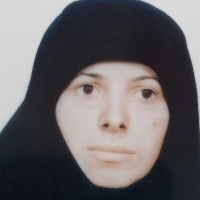Investigating the Relationship between Regional Spatial Structure, Dispersion and the Pattern of Intercity Travel in the Provinces of Iran
Many experts and regional planners believe that multicenter development can create a balance between growth, dispersion, and compression, and while protecting land, reduce greenhouse gas emissions by reducing motor vehicle trips. Based on this, this article seeks to strengthen the decision makers' understanding of its application by examining the relationship between polycentricity or monocentricity in 31 country provinces, the travel pattern and scattered behaviour. Thus, the logic of the current research is comparative and based on descriptive and correlational methods. First, using two criteria of city size distribution and spatial distribution of centres, the degree of polycentricity of the country's provinces was determined. Then, using Pearson's correlation, the relationship between the spatial structure indicators and topographically dispersed variables and travel patterns at the level of the country's provinces was investigated. The results show that more polycentric provinces generate more trips per person (personal and public). Also, there is a positive and significant link (0.825) between the spatial distribution of cities, the degree of polycentricity of provinces and energy consumption caused by transportation. Although, at first glance, the increase in the share of trips by private car can appear as a threat in multi-centred areas, but according to the travel demand, it can be an economic justification for strengthening public transportation and an opportunity to reduce pollution, especially in multi-centred metropolitan areas. In addition, there is an inverse relationship between the size distribution of cities, and the number and area of building permits (respectively, -0.37 and -0.36), which can indicate the weakening of economic incentives for urban sprawl. Finally, it seems that the polycentric-intensive model can be a more suitable structure for sustainable development.
-
Evaluating the Components of a Child-Friendly City (A Case Study of Amol)
Zahra Barandeh, , Naser Aligholiadeh Firouzjaee *
Journal of SHAHR-HA, -
Studying informal settlements with livability approach (Case study: Sari informal settlements)
*, Kobra Aghajani, Rahimberdi Annamoradnejad
Research and Urban Planning,


